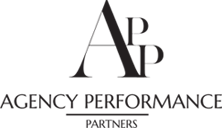One of the most common questions I hear from agents is, “Should I have an employee training program? And what works best?” For the most part, we are good at training employees on the items they need to know regarding products and systems. This includes all CE credits, having carrier marketing reps come in to discuss their different products, and spending time showing them the agency management system, comparative raters, and other tools at their disposal to do their jobs.
Where I typically see less focus is in the following two areas. Firstly, there is very little training on how we should interact with prospects and clients. Secondly, we don’t train them on how to manage their desk.
There are a number of different areas where I see front-line staff struggle when it comes to interacting with clients. All of the items below are programs in which Agency Performance Partners has developed training for insurance agencies. Some of these areas are a little more traditional:
- Sales Training
- Annual Review Calls
- Handling Rate Increases
- Overcoming Price Objections
Other programs we have developed are just as important, but aren’t ones that immediately spring to mind when thinking about staff training:
- Handling Difficult Clients
- Time Management and Task Prioritization
- How To Ask For a Referral
- Account Rounding for Account Managers
Regardless of the training you wish to execute, you need to carefully select the trainer that is right for your agency. Here are three things any employee training program should have to be successful:
Relatability
Introducing a new way of doing things will often (and arguably “should”) push people outside of their comfort zones, in order to see growth. Having said that, knowing where to push and how to push is essential to success. The biggest way to accomplish this is to relate the training with the success of the employee. Training an Account Manager with traditional sales techniques will not likely have the same effect as a training specifically built around cross-selling existing clients or handling an inbound sales call.
Before selecting a training program, identify how well the trainer connects with the specific department and people within that department. Has the program been built for this target audience?
Trackability
In order to be able to determine if a training was successful, we need to be able to identify the metrics we are going to track. This includes being able to measure the number today and then tracking it on a regular basis to track improvement (or lack thereof).
Before selecting a training program be sure to discuss how the metrics are going to be tracked and what results should be expected. Does the training program come equipped with a way to track the results?
Executability
While sitting in a class in a conference, it can be easy to fall into the “this all makes sense” trap. Most good ideas will make sense in theory. The trick is really in the execution. If people leave the training and go back to their desks without adjusting the way they do things, nothing will change. Execution is way harder than conceptualizing the solution to a problem.
Before selecting a training program, determine execution is included in the training. One-day training programs have a tendency to be much less executable than a multiple-point training where accountability can come into play.
Conclusion
The first step is identifying what additional training outside of the traditional insurance and systems training needs to occur within your agency. Once you have your list, discuss with the management team and the staff to get buy-in on the most needed trainings. The team at Agency Performance Partners actually helps with this by performing an Agency Assessment to determine a “baseline” for your team. When firms like APP provide tools like this, it can be helpful to get an idea of what trainings will best suit you.
While there are a lot of other considerations, cost and experience being two I didn’t even mention here. But once you have a list of your most needed trainings, focus on programs that are relatable, trackable, and executable. If you are comfortable with those items, you can focus on other considerations.



